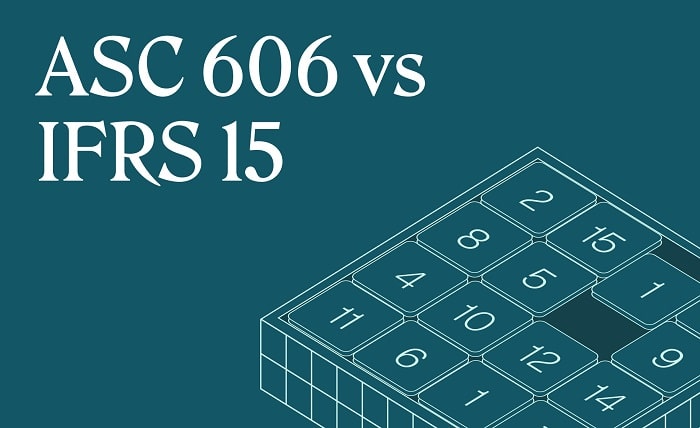ASC 606 Vs. IFRS 15: Revenue Recognition in Cloud Accounting

ASC 606 and IFRS 15 are pivotal frameworks in cloud accounting for revenue recognition. They establish guidelines for businesses to report income from contracts with customers. While ASC 606 is a U.S. standard, IFRS 15 is its global counterpart, both emphasizing transparency and consistency in recognizing revenue within cloud-based services.
What Is IFRS 15?
IFRS 15, also known as International Financial Reporting Standard 15, is a global accounting standard issued by the International Accounting Standards Board (IASB). It provides guidelines for recognizing revenue from contracts with customers. IFRS 15 was developed to ensure consistency and comparability in revenue recognition practices across different industries and countries.
The standard was published in May 2014 and became effective for annual reporting periods beginning on or after January 1, 2018. It replaced the previous revenue recognition guidance, IAS 18 (Revenue), IAS 11 (Construction Contracts), and related interpretations.
IFRS 15 introduces a comprehensive framework for recognizing revenue by applying a five-step model:
- Identify the Contract
Determine whether a contract with a customer exists and includes the identification of the parties involved, the contract’s terms, and the rights and obligations of each party.
- Identify Performance Obligations
Identify the distinct goods or services the entity promised to transfer to the customer and account for them as separate performance obligations.
- Determine the Transaction Price
Determine the amount of consideration (payment) the entity expects to receive in exchange for transferring the promised goods or services to the customer.
- Allocate the Transaction Price
Allocate the transaction price to the identified performance obligations in proportion to their standalone selling prices.
- Recognize Revenue When Performance Obligations Are Satisfied
Recognize revenue when control of the goods or services transfers to the customer, indicating that the performance obligation has been satisfied.
IFRS 15 aims to provide a more principles-based approach to revenue recognition, focusing on transferring control rather than transferring risks and rewards. It applies to a wide range of industries and transactions, including sales of goods, services, licenses, royalties, and construction contracts.
Companies that adopt IFRS 15 need to carefully assess their contracts and revenue recognition practices to ensure compliance with the new standard. The objective is to provide a more accurate and transparent representation of a company’s financial performance by aligning revenue recognition with transferring goods or services to customers.
What Is ASC 606?
Now that you comprehend IRFS, it’s important to understand ASC 606 vs IFRS 15. ASC 606, or Accounting Standards Codification (ASC) Topic 606, is a revenue recognition standard issued by the Financial Accounting Standards Board (FASB) in the United States. It outlines the principles that companies must follow when recognizing revenue from customer contracts.
ASC 606 is similar in purpose to IFRS 15, the international standard for revenue recognition, and both standards were developed in close coordination to achieve convergence in revenue recognition practices.
ASC 606 was issued in May 2014 and became effective for public companies for reporting periods beginning after December 15, 2017, and for non-public companies for reporting periods beginning after December 15, 2018. It replaced the previous revenue recognition guidance found in various parts of the U.S. Generally Accepted Accounting Principles (GAAP). Similar to IFRS 15, ASC 606 also uses a five-step model for recognizing revenue.
The goal of ASC 606 is to provide a more consistent and principles-based approach to revenue recognition, enhancing comparability among companies and industries.
Companies subject to U.S. GAAP, especially those that prepare financial statements in accordance with the Generally Accepted Accounting Principles (GAAP) in the United States, need to assess their contracts and revenue recognition practices to ensure compliance with ASC 606’s requirements.
Cloud Accounting and Revenue Recognition
Cloud accounting streamlines financial processes and augments revenue recognition. Centralizing data enhances real-time tracking and reporting of revenue from contracts, aligning with standards like ASC 606 and IFRS 15. This technology ensures accuracy and compliance in recognizing revenue across various industries and jurisdictions.
Final Thoughts
In cloud accounting, ASC 606 and IFRS 15 are pivotal guides, fostering transparent and uniform revenue recognition practices. As businesses increasingly embrace cloud accounting, adherence to these standards becomes paramount for informed decision-making and global financial integrity.




